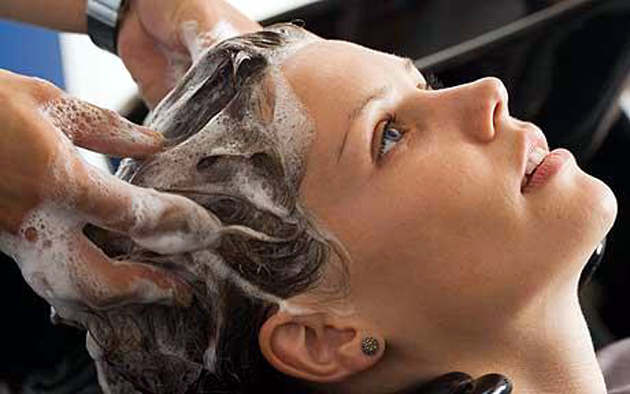Shehnaz Hussain
Care of the hair after colouring is very important, to prevent dryness and protect the texture of the hair. Chemical colourants and dyes can deplete moisture, making the hair very dry and brittle. Repeated or incorrect colouring can weaken the hair, leading to split ends and hair breakage. The normal balances of the scalp can also be upset and trigger off dandruff and other related conditions.
Permanent dyes and colours work by changing the structure of the hair. They actually strip off the outermost layer, the cuticle, in an uneven manner, in order to penetrate the inner layer. It is the cuticle which protects the hair and contributes to its shine. Damage to the cuticle not only makes the hair more vulnerable to breakage and loss, but the hair also becomes dull and rough. Semi permanent methods, like hair rinses and creams, last for 4 to 6 shampoos. They usually work by penetrating the cuticle, or outermost layer of the hair. They do not cause as much damage as the permanent dyes, which actually enter the middle layer and change the pigments. Semi-permanent methods are suitable for disguising grey hair, or for lending a richer colour to dull hair.
In cases of excessive dryness of dyed or coloured hair, hot oil therapy helps. Mix one part of castor oil with two parts coconut oil. Heat and apply. Remember to apply on the ends too. Then dip a towel in hot water, squeeze out the water and wrap the hot towel around the head, like a turban. Keep it on for 5 minutes. Repeat the hot towel wrap 3 or 4 times. This helps the hair and scalp absorb the oil better.
Avoid vigorous massage and rubbing when you apply oil. Massage the scalp gently, using only the finger tips. Actually move the scalp in small circular movements. This helps to stimulate blood circulation to the follicles. Keep the oil on overnight and wash the hair the next day. Use a mild herbal shampoo to wash the hair. Shampoos containing herbal extracts of amla, reetha, shikakai, brahmi, bhringaraj, bael, help to improve the health and texture of the hair. Wash the hair with lukewarm or cool water. Avoid very hot water.
To dry the hair, avoid rubbing with your towel. Instead, wrap it around the head and allow it to absorb excess water. Comb out the tangles with a wide toothed comb, starting from the ends and working upwards. Allow the hair to dry naturally.
After washing the hair, apply a creamy conditioner, massaging it lightly into the hair. Leave on for 2 minutes and then rinse off with water. Regular conditioning is extremely important. Or, apply a leave-on type of conditioner or hair serum to soften and disentangle the hair. They improve the look and texture of the hair and also protect it. Shampoos and conditioners with sunscreen would also help to protect the hair from the effects of sun-exposure.
Here are some home remedies to help hair that has been subjected to colours and dyes:
* For a deep conditioning treatment, mix together one egg, two tablespoons castor oil, the juice of a lemon and one teaspoon pure glycerin. These ingredients should be well mixed. Use an egg beater if you like. Massage this well into the scalp and apply on the hair too. Wash your hair after half an hour. Rinse well with water to remove all residues, so that they do not clog the pores.
* Both hot and cold infusions can be made from hibiscus flowers and leaves. Hibiscus flowers are called “gurhal” in Hindi and “javakusuma” in Sanskrit. For hot infusions, the flowers and leaves are added to boiling water and allowed to stand in it for 10 to 12 hours. The infusion (liquid) is strained and then used on the scalp. It can be used as a last rinse after washing the hair. For cold infusions, the flowers and leaves are allowed to stand overnight in cold water, in a ratio of one to six. The flowers are squeezed and the water is strained before use. Such infusions can be used to wash the hair and scalp, or applied on the scalp with cotton wool. The paste or juice of the flowers can also be applied on the hair.
You can also take hair spa treatments. This entails oil massage, exposing the hair to steam, application of hair packs and so on. It helps to improve the texture and add shine to damaged hair.
Trending Now
E-Paper


